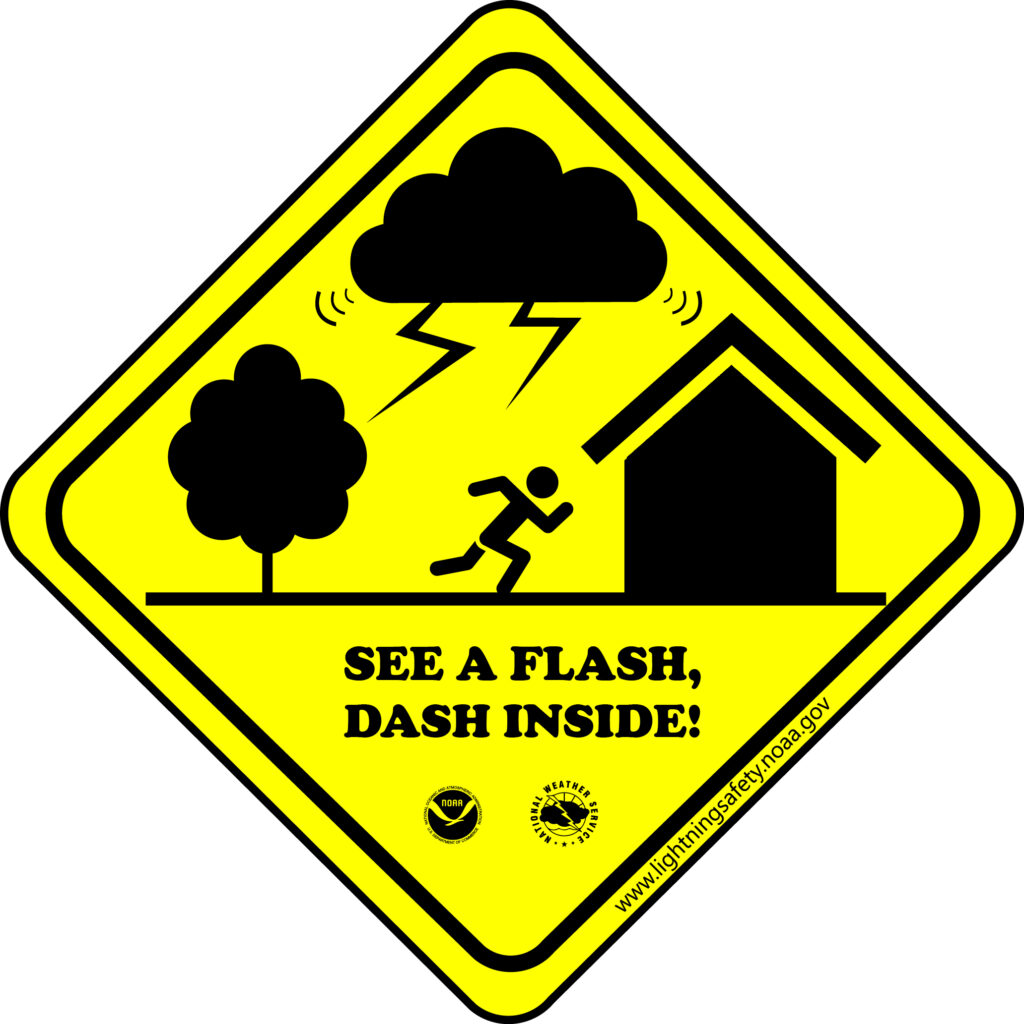Lightning Safety
Key Notes :

- What is Lightning:
- Lightning is a sudden and powerful electrical discharge that occurs during thunderstorms.
- How Lightning Forms:
- Lightning forms when there is a buildup of electrical charges within clouds. These charges are discharged as lightning when they become too great to be contained within the cloud.
- Dangers of Lightning:
- Lightning can be extremely dangerous as it can cause fires, damage structures, and harm people and animals.
- It can cause injuries or even fatalities when it strikes individuals directly or through conductive materials.
- Safety Tips:
- Indoors is Safest: When there is lightning, the safest place to be is indoors. Stay away from windows, doors, and electrical appliances.
- Avoid Water: Avoid taking a bath or shower, washing dishes, or swimming during a thunderstorm.
- Unplug Electronics: Unplug electronic devices and appliances to protect them from power surges.
- Stay Away from Tall Objects: Do not stand near tall objects like trees, poles, or metal objects during a storm.
- Lightning Safety Position: If caught outside with no shelter, crouch down with your feet close together, cover your ears, and minimize your contact with the ground.
- Safety Indoors:
- Avoid using corded phones or any electronic devices connected to the wall.
- Wait 30 minutes after the last clap of thunder before going back outside.
- Safety Outdoors:
- If you are outside and cannot find shelter, do not stand under trees or in open fields. Find a low-lying area and crouch down.
- Do not seek shelter in small, isolated structures like sheds or outhouses.
- Lightning Myths:
- Contrary to popular belief, rubber tires do not protect you from lightning in a car. It’s the metal frame of the car that provides protection.
- Teaching Others:
- Educate your friends and family about lightning safety to keep them safe during storms.
- Emergency Preparedness:
- Have an emergency kit ready with essentials like flashlights, batteries, first-aid supplies, and non-perishable food items in case of power outages caused by lightning strikes.
- Lightning Detectors and Apps:
- Some smartphones and weather apps provide real-time lightning strike alerts, which can be helpful in staying safe.
Let’s practice!

